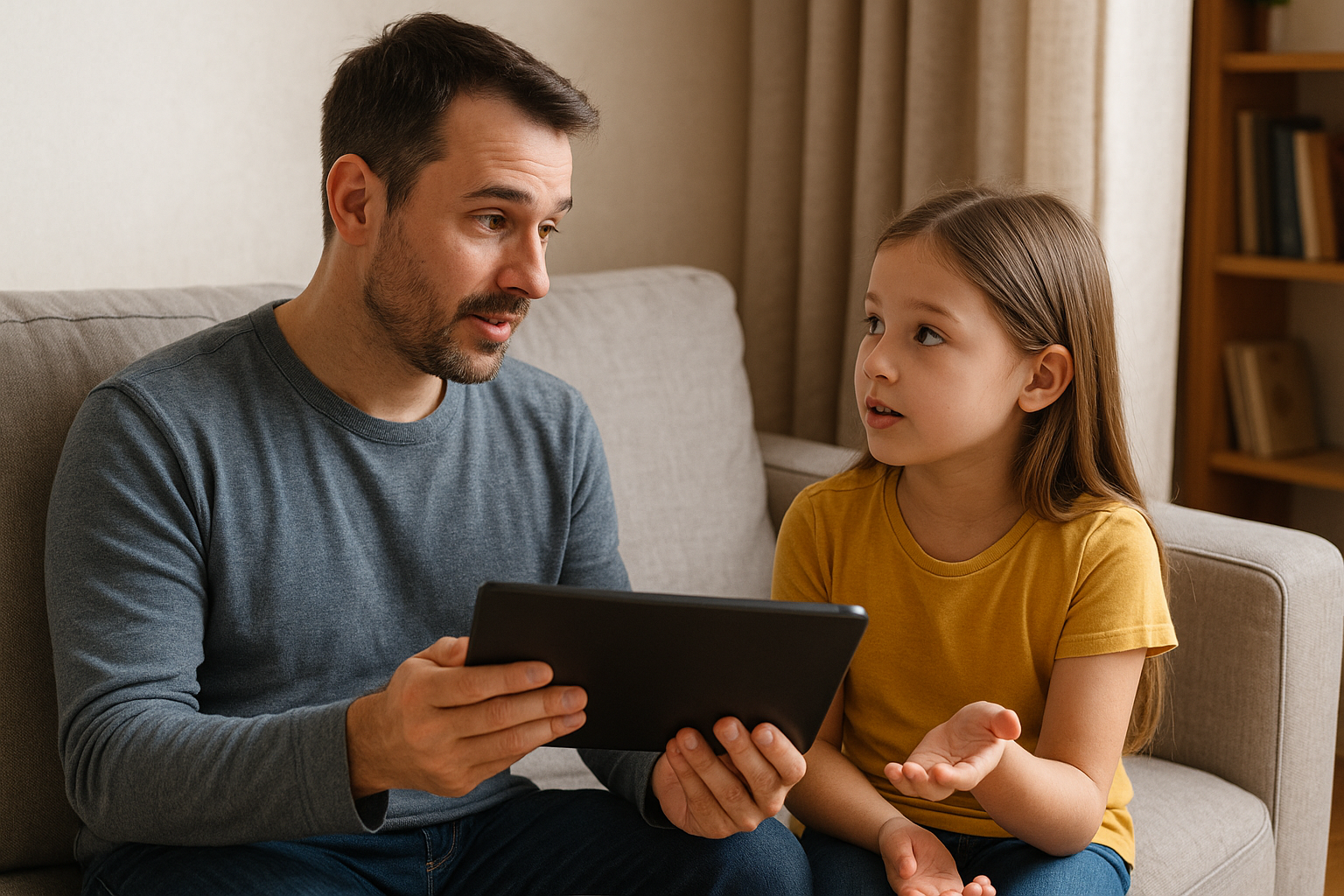In today’s digital age, screens are everywhere—phones, tablets, TVs, computers, gaming consoles. While technology can be educational, entertaining, and even social, too much screen time can impact your child’s development, sleep, behavior, and emotional health.
Teaching your child to manage screen time responsibly is one of the most important digital life skills you can give them. The goal isn’t to ban screens completely—it’s to help them use technology in a balanced, healthy, and mindful way.
Here’s how to guide your child toward smart screen habits that support their overall well-being.
Understand the Impact of Screen Time
Screens aren’t “bad,” but excessive or unregulated use can:
- Interfere with sleep and mood
- Reduce physical activity
- Delay language and social development (especially in young kids)
- Increase irritability and attention difficulties
- Replace real-life interactions with digital distractions
Knowing the risks helps you set boundaries with purpose—not fear.
Model Healthy Screen Habits
Your child learns more from what you do than what you say. If you’re glued to your phone during dinner or constantly checking notifications, they’ll learn to do the same.
Model balance by:
- Putting phones away during meals
- Turning off the TV when not watching
- Taking screen breaks
- Talking about your own screen limits (“I’m putting this down so I can focus on you.”)
Your example shapes their expectations.
Set Clear, Age-Appropriate Limits
Children thrive on structure and consistency. Set screen time rules that are easy to understand and follow.
For example:
- Limit to 1–2 hours of recreational screen time per day (based on age)
- No screens during meals, before bed, or during family time
- Use a timer or routine to mark when screen time begins and ends
- Define screen-free zones (e.g., bedrooms, bathrooms, dinner table)
Explain the why behind each rule. Kids are more likely to cooperate when they understand the reason.
Use Screens as a Tool, Not a Babysitter
It’s tempting to use screens to keep kids quiet or occupied. While that’s sometimes unavoidable, it shouldn’t be the default solution for boredom or frustration.
Instead of handing over a device, offer alternatives like:
- Art or crafts
- Reading a book together
- Building with blocks or LEGOs
- Going outside for fresh air
- Helping with simple tasks like cooking or organizing
Save screens for specific times, not all the time.
Co-View and Engage When Possible
Whenever you can, watch or play along with your child. This gives you a chance to:
- Talk about what they’re watching
- Ask questions and share reactions
- Spot inappropriate content early
- Teach critical thinking about what they see
You can say:
- “What do you like about this game?”
- “How did that character feel?”
- “Do you think that’s something that would happen in real life?”
Screens become more meaningful when shared and discussed.
Encourage Balance With Other Activities
Make sure screen time doesn’t replace essential parts of your child’s day, like:
- Physical activity and play
- Social interaction
- Chores and responsibilities
- Homework or learning time
- Quiet time and creative play
Create a balanced daily routine that includes screen time and screen-free moments.
Teach Self-Regulation and Choice
As your child grows, involve them in managing their screen time.
Ask:
- “How much screen time do you think is fair today?”
- “What will you do when your time is up?”
- “What else do you want to do today besides screens?”
This helps them learn to plan their time, follow limits, and make responsible choices.
Set Digital Boundaries With Consistency
If your child resists limits (and they probably will at first), stay calm and firm.
Tips for smoother transitions:
- Use a countdown timer: “You have 10 more minutes, then we turn it off.”
- Give reminders: “After this show, it’s time to clean up.”
- Offer choices: “Do you want to stop now or in 5 minutes?”
- Follow through gently: “I know it’s hard, but screen time is over for today.”
Consistency teaches that boundaries are real—and helps your child adapt.
Talk About Online Safety and Media Literacy
As your child gets older, it’s not just about screen time—it’s about how they use screens.
Teach them:
- To avoid sharing personal information
- To ask you before downloading apps or games
- That not everything online is true
- How to recognize ads or unsafe content
- To tell you if they see something that feels “off” or scary
Screen safety is a lifelong conversation—not a one-time talk.
Celebrate Screen-Free Moments
Make screen-free time fun, not a punishment.
Create screen-free rituals like:
- Family game night
- Storytime before bed
- Weekend walks or outings
- Cooking a new recipe together
- Music and dance breaks
When kids experience joy without screens, they learn that real life is just as fun—and often more fulfilling.
Screens Are a Tool—Not the Boss
Technology is a part of your child’s world. It’s not about banning screens, but about teaching balance, intention, and awareness.
When you set healthy boundaries, model good habits, and keep communication open, your child learns that they are in control of how screens fit into their life—not the other way around.
With your support, screen time can become a tool for learning, connection, and fun—not a source of stress or conflict.
